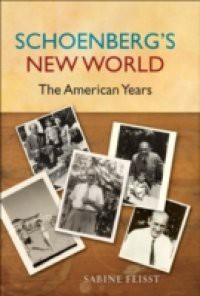Arnold Schoenberg was a polarizing figure in twentieth century music, and his works and ideas have had considerable and lasting impact on Western musical life. A refugee from Nazi Europe, he spent an important part of his creative life in the United States (1933-1951), where he produced a rich variety of works and distinguished himself as an influential teacher. However, while his European career has received much scholarly attention, surprisingly little has been written about the genesis and context of his works composed in America, his interactions with Americans and other emigres, and the substantial, complex, and fascinating performance and reception history of his music in this country. Author Sabine Feisst illuminates Schoenbergs legacy and sheds a corrective light on a variety of myths about his sojourn. Looking at the first American performances of his works and the dissemination of his ideas among American composers in the 1910s, 1920s and early 1930s, she convincingly debunks the myths surrounding Schoenbergs alleged isolation in the US. Whereas most previous accounts of his time in the US have portrayed him as unwilling to adapt to American culture, this book presents a more nuanced picture, revealing a Schoenberg who came to terms with his various national identities in his life and work. Feisst dispels lingering negative impressions about Schoenbergs teaching style by focusing on his methods themselves as well as on his powerful influence on such well-known students as John Cage, Lou Harrison, and Dika Newlin. Schoenbergs influence is not limited to those who followed immediately in his footsteps-a wide range of composers, from Stravinsky adherents to experimentalists to jazz and film composers, were equally indebted to Schoenberg, as were key figures in music theory like Milton Babbitt and David Lewin. In sum, Schoenbergs New World contributes to a new understanding of one of the most important pioneers of musical modernism.

